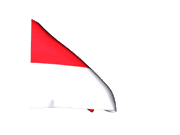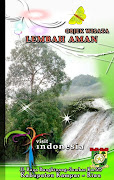Muara Takus Temple HISTORY
A. Geographical cluster Candi Muara Takus
Position Muara Takus village
Muara Takus District located within the region XIII Koto Kampar, Kampar regency, Riau -- Indonesia. Distance from Pekanbaru (the capital of Riau Province) to village about 128 KM. Travel to the village of Muara Takus, can only be done by road.
Origin of name Muara Takus
Muara Takus comes from the mouth of the name of a small creek called "Takus" to empty the trunk Kampar right. According to one ambassador of Singapore to Indonesia, who has been visiting the mouth of Muara Takus in the year 1977, said that the Muara Takus comes from two words "muara" and “ takus “ .
Furthermore he says, "muara" clearly does have a place where the children end the stream of the river to the sea or river to a larger, while the word "Takus" derived from the language China namely ta, ku dan se. Ta means that large, Ku mean while the old se mean temple. So if we combine the overall meaning of the word Muara Takus is: an old temple (the old temple) of / which is located on the magnificent river estuary.
Location cluster Candi Muara Takus
Racemose Muara Takus temple is located in the equatorial line 0. 0 21 north latitude and 100. 0 39 east longitude. Surrounded by walls made of white stone, the size of 74 m X 74 m, and is located road that connects between the village of Muara Takus the village Tanjung District XIII Koto Kampar.
Cluster this temple there are several as follows:
Temple Mahligai
Temple Palangka
Temple Bungsu
Old Temple
Building I
Building II
According to experts, the overall number of temples of 7 (seven) cluster. So there are three temples that have not yet found the building. Building I (one) estimated crematorium and Building II (two) is building the temple has not known the names and shapes.
B. BACKGROUND HISTORY cluster Candi Muara Takus
1. 1. The findings
Racemose Muara Takus temple was first found by De Groot cornet in the year 1860, the results finding poured in a text titled "Koto temple."
2. 2. Research
a. WP GROENEVELD WP GROENEVELD
In the year 1880, a Dutch named above to conduct research racemose temple Muara Takus. Results of research is key to any posts short Verbeek and Van Delden.
b. RDM VERBEEK AND E.TH. VAN DELDEN
Then in 1880 Verbeek and Van Delden results based on any posts WP Groeneveld said that old buildings are buildings that consists of a Buddhist monastery and several temples.
In the year 1881 Verbeek and Van Delden write opinions about the existence of the temple with the title of Muara takus "Hindoe Ruinen De Bij Moeara Kampar Guru Aan De Rivier."
c. JW IZERMAN
In the year 1889, JW Izerman make measurements as a photo interpreter, at the time they reached dikompleks temples that can be viewed are:
Stupa (temple Mahligai)
Stupa (temple Mahligai) is a building that is still good so that it can be drawn according to the circumstances but there are parts of buildings that have been damaged. At the top of the tower there is a stone with the paintings and reliefs oval leaves.
High terrace,at side east Stupa (temple Palangka)
Temple with the youngest terrace have a limit between the brick and sandstone.
Candi Tua Old Temple
d. DR. FM SCHNITGER
In the year 1935 he was doing excavation of the foundation, the gate of the north wall, the foundation of I, II and Pondasi Building Old Temple. In the youngest temple which is located west of the temple Mahligai never found a brick-shaped Lotus. There are gray and gold-plate the mixed soil. Gold plate in the image can be Trisula and writing in the letter nagari. According SCHNITGER youngest terrace temple, the temple in the Old, Palangka temple buildings I and II comes from the XI century, the temple and the temple Mahligai on Old XII century (1936). At the top of the tower Mahligai temple decorated with four lion statue on each angle. While in the temple youngest terrace above 20 there is a small stupa fruit and wajra-wajra who reads three or nine letters.
e. Bronson and heritage of ancient & National Jakarta Jakarta (1973 )
They conduct research and digging around the fence at the cluster temple Muara Takus and surrounding areas. From the results of the excavation found ceramics, which are generally older than the Yuan Dinasty Ming and Ching between centuries XIII and XIX. Results further excavation also found the remnants of the brick building which is located outside the complex. Then found Pragmen also made of bronze with the Nagari any posts that come from the XII century which can be connected with the State Government with the King Karta pamaiayunya expedition.
f. NJ KROM
Estimate of this building comes from the VII century M se or with the time of inscription in VIENGSA CHINA ( BOSCH 1930.149 )
g. BERNET KEMPRES
Said that the Stupa temple Mahligai the shape like a tower, with different forms of the stupa Indonesia although still follow Buddhist Architecture.
h. IR.JL MOENS
Argued that the central kadatuan Sriwijaya in the group of temples Estuary Guru, Guru because Estuary near the confluence of two rivers namely Sungai Batang Kampar Kanan and Mahat. And shadow in Walacakra that is not long and short in mid-eight, at noon the shadow is not there, this premonition that this region is on the equator.
i. BOSCH said, that Palembanglah as the center kadatuan Sriwijaya
j. Research Center National ancient heritage
In 1977 the national center of research and areas of ancient history and archaeological permuseuman Depdikbud office of Riau Province, the research group of the temple Muara Takus. One of the research, said that the building of temples and Stone Sand (tuff).. Other research results concluded that the building is a sacred Buddhist building is estimated to have a close connection with the Sriwijaya kadatuan.
CENTER KADATUAN Sriwijaya
Racemose temple Muara Takus always associated with Kedatuan Sriwijaya. Because the building with the top stupanya as a symbol Buddhistis. According to history, Sriwijaya kadatuan is a maritime country that its capital is always moved.
Muara Takus temple cluster is a legacy of ancient Buddhist (CLAIRE Holt 1967; 37) this is closely related to the mother search city Sriwijaya that so far can not exactly known. Muara Takus as the center kadatuan Sriwijaya, experts revealed in many ancient or establishment of which they have to say that that is the center Takus Estuary Kedatuan Sriwijaya while other states are not. Individual opinions they express the reasons for the strong.
Next expressed opinion of experts : :
I-TSING. In the VII century (671 years old M) China take a trip to India. to study Buddhism and live here (Estuary Guru) for 6 months. Its capital and surrounded the fort in placed by more than 1000 Bhiksu. According to the I-TSING to eight months in the shadow of a stick in Wala Cakra not be longer or shorter, and in the middle of the day without a shadow standing. The statement above I-TSING match situation Estuary Guru temple, located in the equatorial line.
Chia-TAN,. According to Chia-tan to the north of the Malacca kingdom located YOUEH LO, which is rare like, to the south of the Malacca kingdom located Shih-LI-FOR-SHEH, it is estimated that Kedatuan Sriwijaya. Muara Takus is indeed located in the south of the Malacca.
STORIES PEOPLE
According to the Hikayat Shahibul, Kampar river upstream population comes from the descendants of Sri daughter of the family who came from Padang Panjang Pariangan. Reputedly a king's daughter Sri woo Hindu World, and after he married and established a kingdom in the Muara Takus, the descendants can be found here (Muara Takus).
One day, the Hindu king to return to his country, when people came, a group that also batak follow Hindu religion, but city this kingdom has been abandoned.
Sri Putri World has apparently wedded to the progenitor of a son who was named the Master, who later became king in Muara Takus offspring is PAMUNCAK RAJA Datuk DUBALAI. Muara Takus in the last king is RAJA BICAU. Perhaps city Muara Takus mouth very wide so that if a cat goes exploring city roof of a house takes time for three months until the new come back again.
Pongkai is the name of a village that is located on the downstream stem Kampar approximately 8 km from the village of Muara Takus. According to local folklore bricks used to build the temple in the Muara Takus, made this didesa Pongkai.
Pongkai comes from the Chinese, which consists of two word "pong" which means that holes, and "kai" which means land. So the meaning is the whole ground hole.
Brickyard can be witnessed didaerah pongkai holes form a vast land where the land is to be brick. Brick was made in the village after Pongkai, initially brought through the river to Muara Takus. Because transport through the river is felt very heavy so carry away changed with the use of human queue from the village until to place development Pongkai temple in Muara Takus.. So bricks that are in sequence that requires a lot of manpower, considering the 8 km distance.
Development of temple architecture Muara Takus can be said of Buddhism. This can be seen with the "stupa", which is the symbol of Buddha Gautama. But if the views of the temple Mahligai, can be considered as a transition between ciwaitis to buddha, with the symbol Pallus and Yoni. View from a distance of just as the tower.
Development of temple architecture Muara Takus have equal with Aloha architecture building temples in India, as in:
Kapital Kapital
Roda Wheel
Kepala Singa Lion Head
There are also similarities with the architecture of the temple Myanmar (Burma). Similarly with the temple in Bihar Mahal of North Sumatra and on the terrace-temple terrace Muara Takus is similar to the temple Borobudur .
Thus the legacy of history and archeology should be inspected to truly reveal about the history and background on the objectives.
Muara Takus temple group consists of:
Mahligai temple, The building is square shaped with the size of 10:44 m X 10.60 m, height up to the peak of 14:30 m. Pondamen standing over octahedral (astokoma) and side part for 28 units. On base there are double lotus in the year 1860 M cornet during a visit to De Groot sana there , Found on each side of the statue of a lion in sitting position.
Candi Bungsu , Bungsu temple restoration started in 1988 and completed in 1990. Size X 7:50 m 16:28 m and the high after pugar at 6:20 m from the surface, volume and 365.80 m 3.
Palangka temple, temple restored Palangka began in 1987 and completed in 1989.
Tua temples, this temple is the largest temple of the temple-the temple, the temple has 36 units. And restored in 1990.
The detailed cluster Estuary Guru temple is as follows:
Mahligai Temple
Palangka Temple
Bungsu Temple
Tua Temple
Building I (incinerator)
Building II
Building III
Building IV ancient embankment
Haw
Rabu, 15 Juli 2009
Langganan:
Posting Komentar (Atom)









































Tidak ada komentar:
Posting Komentar